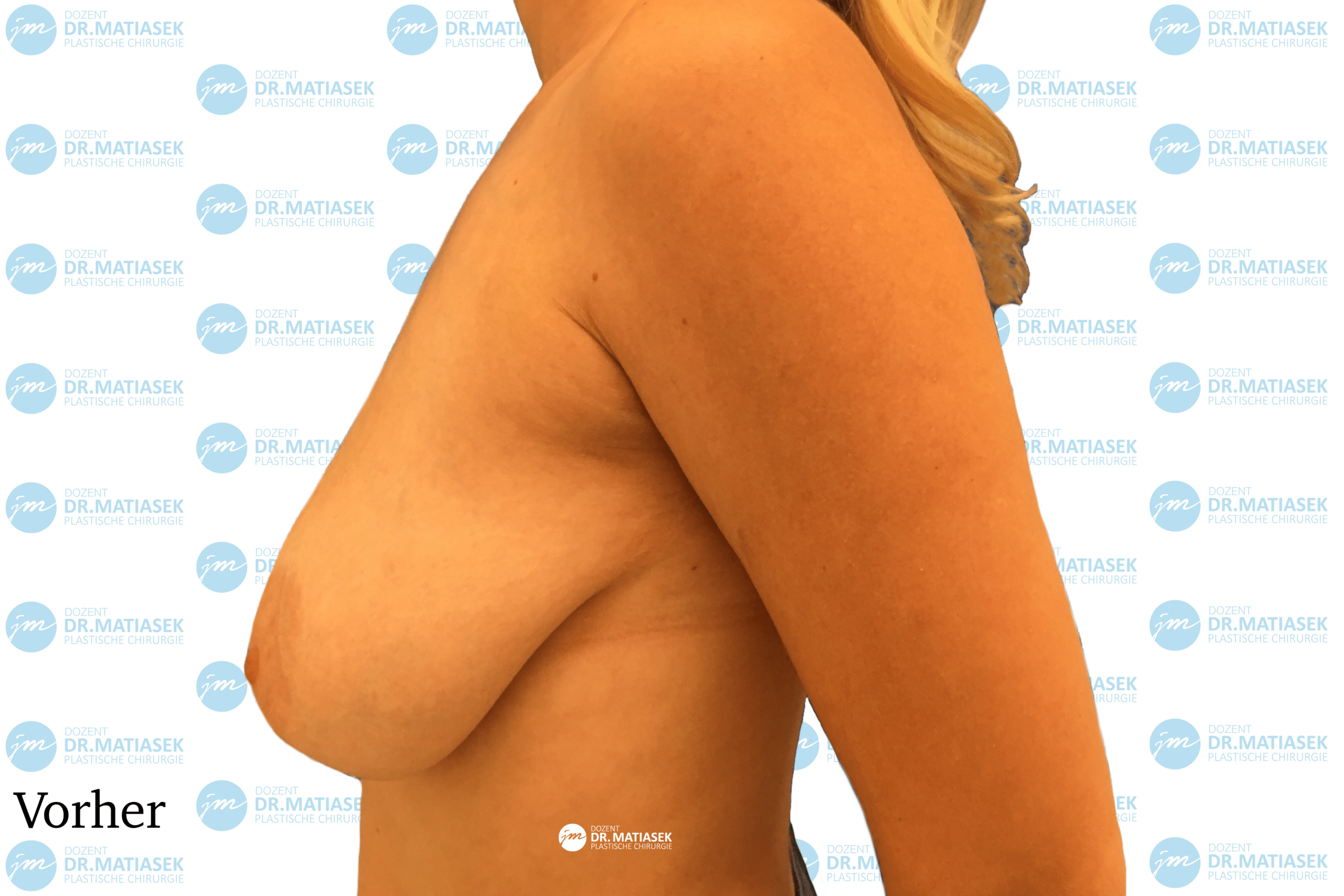A well-formed, firm breast has always been the epitome of femininity for many women. However, due to the normal aging process, the skin constantly loses its elasticity, causing the breasts to sag. Pregnancy, breastfeeding, weight loss and weight gain can also result in breast sagging. Appearance is often strongly linked to one's own self-esteem and self-confidence, which is why many women no longer feel comfortable in their bodies. A breast lift, also known medically as a mastopexy, can give patients a positive body image and self-esteem, as the breast appears firmer and more voluminous after the procedure. In addition, if desired, in the course of the breast lift, a breast augmentation be performed. With a youthful-looking breast, the quality of life improves a great deal again.
What are the reasons for a breast lift?
The reasons for a breast lift can be very diverse. What all women have in common, however, is that the breasts lose their shape, elasticity and firmness with age. The connective tissue slackens and the bosom sinks. But even after pregnancy and breastfeeding, many women are dissatisfied with the appearance of their breasts. However, a mastopexy should not be carried out until six months after weaning, as new fatty tissue can still accumulate in the breast during this time and this reduces the tendency to sag. Other reasons for a breast lift are breast malformations or an unsightly breast shape. A clearly pronounced difference in size and shape creates enormous suffering in some women and the desire for an operative change.
Weight fluctuations and hormonal fluctuations can also lead to sagging breasts. When you lose weight, for example, fat tissue is broken down, causing the breast to lose volume and skin to sag.
For whom is a breast lift suitable?
Since breast growth should be completed before a surgical procedure, a breast lift is only performed from the age of 18. Prior surgery is only possible in exceptional cases with the consent of the parents. This type of breast operation is particularly suitable for women with sunken breast tissue. Patients should be in good physical condition and have completed family planning for the time being, otherwise the breast may change again during pregnancy and breastfeeding. Strong weight fluctuations should also be avoided, as these can falsify the end result.

What do I have to consider before a breast lift?
A comprehensive consultation takes place before the breast lift, in which you can express your wishes and you will be informed about possible risks and complications. Your breasts will then be thoroughly examined and your breast condition will be determined using ultrasound or mammography. Building on this, Dr. Matiasek will give you a treatment plan that is individually tailored to you. Of course, there is enough time in the consultation and in the subsequent breast lift phases to answer all your questions in detail.
Since a breast lift is a major procedure under general anesthesia, you should be well prepared for it. This includes stopping blood-thinning medication and sleeping pills, as well as vitamin C, two weeks before the operation. You should also stop your alcohol and nicotine consumption as well. Six hours before the procedure, you can only have a light meal and drink water or unsweetened tea up to two hours before it.
How does a breast lift work?
Depending on how much the breasts are sagging, different surgical techniques are used.
- The circular technique is best for slight excess skin. A small incision is made around the nipple and the excess skin is removed.
- The Lejour technique or L technique, which requires two incisions, is recommended for moderate excess skin. These are also done around the nipple and directly below it. The skin under the nipple is now pulled together slightly, creating a small scar. As a rule, however, this smooths out again.
- The T-cut technique is a possible surgical method in the case of a very large amount of excess skin. Here one incision is made around the nipple and a second in the crease under the breast so that the skin can be removed and tightened from multiple sides.
In most cases, a breast lift is a slight over-tightening. This is because the breasts sag a little within the first few months after the procedure. If the breast becomes smaller due to the removed skin, there is the possibility of a breast lift with implants at the same time.
What are the risks of a breast lift?
As with any surgical procedure, complications can arise after a breast lift. Pain, bruising and swelling as well as tenderness immediately after the procedure are completely normal. However, if you experience excessive pain, you should report it to Dr. Matiasek. Depending on the surgical method, scars can also form, which, however, are barely or not at all visible after they have healed. In some cases there are wound healing disorders, infection or scar growth. Heavy smokers in particular have an increased risk. Impairments in breastfeeding ability or sensitivity disorders in the area of the nipples rarely occur, but are possible and cannot be ruled out despite gentle surgical procedures.
What do I have to consider before a breast lift?
As the procedure takes place under general anesthesia, you will remain in the clinic for at least one night to be observed. Immediately after the operation, you will receive a special support bra that you have to wear day and night for the first six weeks in order to achieve the best possible result. The bra is primarily intended to help wound healing and reduce swelling. If everything is okay so far, you can then go home, where you should, however, treat yourself to rest, as an operation under general anesthesia means stress for the body and it has to recover well.
At night you should make sure that you do not sleep on your side or on your stomach, but always lie on your back. Basically, you should also avoid anything that stresses the breast area. This includes sports, as well as lifting and pushing heavy objects. Only after about six weeks can you slowly start exercising again. You should also avoid the sauna, steam bath or solarium for six weeks. If your work does not require physical exertion, you can resume it after a few days. Avoid alcohol and nicotine for a few weeks, as both can have a negative effect on wound healing.
As for showering or bathing, you can shower again after about a week. It is best to use special, waterproof shower plasters and stick them over the wounds so that the incisions do not completely soften. You can only take a bath again after five weeks. Good scar care with a scar cream is also very important. This is best applied to the skin several times a day to take effect. Dr Matiasek regularly checks the healing process in follow-up examinations. In this way, he can intervene in good time if something does not go according to plan.
When can I see the results of the breast lift?
In principle, you will get a first impression of the result after six weeks, but the healing process after a breast lift can take about six to twelve months. Only then will the swelling go down completely, because the body needs enough time to recover from the strain. In addition, in most cases the breast is tightened initially, as it subsides slightly again within the first year. The scars also need this much time before they are completely healed. During this process, you should avoid direct sunlight and UV light as this can cause discoloration. Finally, the scars fade, leaving fine white lines that are barely visible.
How long the result will last cannot be said because the connective tissue will give way again over time. But after a breast lift, it does not sag as much as before and you can look forward to a firm and beautifully shaped breast in the long term.
As part of a consultation, you will receive a treatment plan that is individually tailored to you and your needs. Dr. Matiasek looks forward to advising you in his practice on the possibilities of a breast lift.








